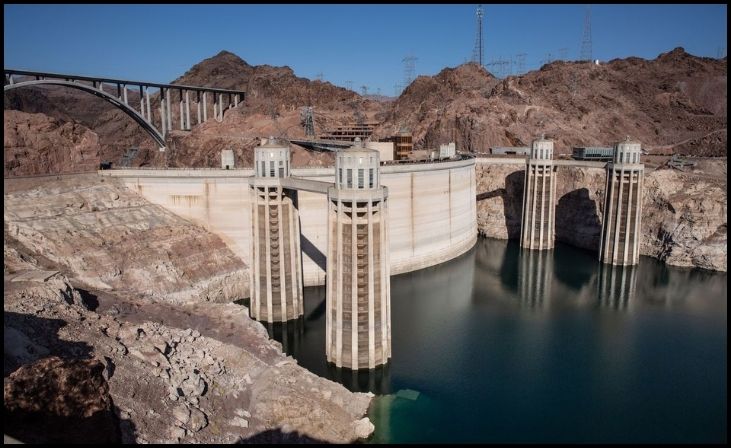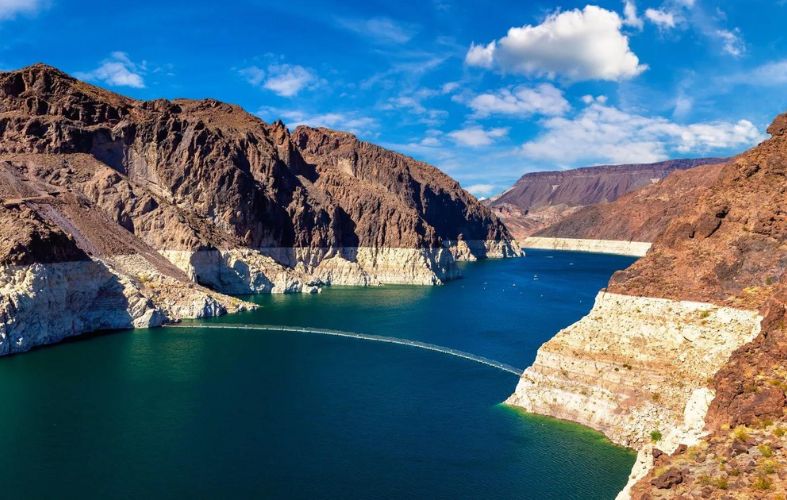Lake Mead Water Levels – Discover the tumultuous rhythm of Lake Mead’s water levels, echoing the pulse of our changing climate. The recent fluctuations in this reservoir, a critical water source for millions, have stirred concern. Witnessing shifts unseen in years, from historic highs to alarming lows, prompts reflections on our water management strategies. As we delve into the depths of this issue, understanding the factors behind these changes becomes crucial. Exploring the impacts on communities, ecosystems, and water policies unveils the urgency of the situation. Join us as we navigate through the waves of Lake Mead’s evolving landscape, seeking insights into the challenges and opportunities it presents.
Factors Driving Rapid Changes In Lake Mead Water Level

The dramatic fluctuations in Lake Mead’s water levels stem from a convergence of significant factors, creating a complex interplay that shapes the reservoir’s landscape. A primary driver is the relentless grip of prolonged drought gripping the American Southwest. This region, home to Lake Mead, has been experiencing a prolonged dry spell, with precipitation levels plummeting to historic lows. The lack of replenishing rains and snowmelt from the Rockies means that the natural inflows into the reservoir have dwindled significantly. These dry conditions have persisted for years, placing immense strain on the water supply that sustains millions of residents and agricultural activities across multiple states.
Also Read: 7 Easy Zero Waste Tips
Adding to this challenge is the diminishing snowpack in the Rocky Mountains, a critical source of runoff that feeds into the Colorado River system, of which Lake Mead is a part. As temperatures rise due to climate change, the snowpack has been decreasing, impacting the volume of water flowing into the reservoir. The reduction in snowmelt runoff not only directly affects the water levels but also compounds the effects of the ongoing drought. The combination of these two factors creates a compounding effect, accelerating the rate at which Lake Mead’s water levels are receding.
Growing Water Demands and Human Impact

The burgeoning population in the Southwest United States, particularly in cities like Las Vegas, Phoenix, and Los Angeles, places an ever-increasing demand on Lake Mead’s water. Rapid urban development, expanding agricultural needs, and industrial growth have all contributed to a surge in water consumption. This heightened demand further exacerbates the strain on an already stressed water system. The reservoir, originally designed to support a much smaller population, now faces the challenge of meeting the needs of millions of people, industries, and ecosystems.
Moreover, human alterations to the landscape and water management practices have played a significant role in the rapid changes in Lake Mead’s water levels. Upstream diversions for agriculture, municipal use, and hydropower have reduced the volume of water flowing into the reservoir. Additionally, the construction of dams and reservoirs along the Colorado River system, while essential for water storage and flood control, have altered the natural flow patterns. These man-made changes have further complicated the delicate balance of water supply and demand, contributing to the unprecedented shifts observed in Lake Mead.
Impacts on Communities and Ecosystems

The repercussions of Lake Mead’s fluctuating water levels reverberate throughout the region, affecting communities, ecosystems, and economies alike. The dwindling reservoir levels directly impact water availability for millions of residents who rely on its waters for drinking, irrigation, and household use. Agriculture, a cornerstone of the Southwest’s economy, faces challenges as farmers contend with reduced water allocations and escalating costs. The hydropower generation capacity of the Hoover Dam, which depends on the reservoir’s water levels, is also impacted, affecting electricity production for the region.
Furthermore, the ecological consequences are profound, with rippling effects on the delicate balance of the Colorado River Basin’s ecosystems. Changes in water levels disrupt habitat for fish and wildlife, impacting biodiversity and potentially leading to the decline of species dependent on the river’s flow. Wetlands and riparian areas, crucial for migratory birds and native flora, are also affected by the fluctuations, altering the landscape and challenging the resilience of these ecosystems.
Also Read: 10 Ways To Walk Better Daily: A Step Towards Healthier Living
Navigating a Sustainable Future

As Lake Mead’s water levels continue to fluctuate at a rate not seen in years, the imperative for sustainable water management practices becomes ever more urgent. Collaborative efforts among states, stakeholders, and policymakers are essential to develop solutions that address the challenges of a changing climate and growing water demands. Conservation initiatives, such as water recycling, efficient irrigation techniques, and public awareness campaigns, play a pivotal role in mitigating the strain on the reservoir.
Long-term strategies must focus on balancing water allocations equitably, promoting water-efficient practices, and investing in infrastructure that enhances water storage and distribution. Additionally, fostering a deeper understanding of the interconnectedness of water resources, ecosystems, and human communities is vital for crafting resilient solutions. By embracing innovation, responsible stewardship, and a shared commitment to sustainability, we can navigate the uncertain waters ahead and ensure the enduring vitality of Lake Mead for generations to come.
Conclusion
In conclusion, the drastic shifts in Lake Mead’s water levels serve as a stark reminder of the intricate balance within our environment. Adapting to these changes necessitates innovative solutions, collaborative efforts, and a deepened understanding of our water resources. From conservation initiatives to policy reforms, the path forward requires a collective commitment to sustainability. Let Lake Mead’s story be a catalyst for change, motivating us to safeguard our precious water sources for generations to come. As we navigate the waves of uncertainty, let us anchor ourselves in resilience and shared responsibility towards our environment.
FAQs
The primary factors include persistent drought conditions in the region, reduced snowpack in the Rockies, and increased water demand from growing populations.
These changes impact water availability for millions of residents, agricultural activities, hydropower generation, and the overall ecological health of the area.

Leave a Reply